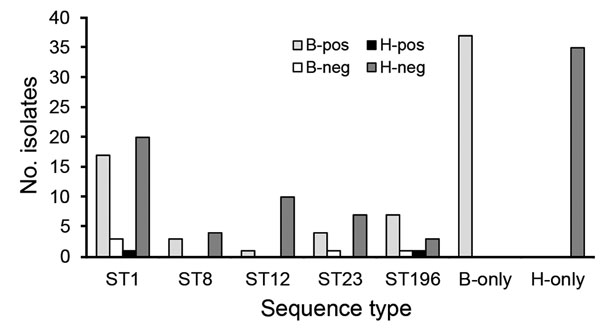Volume 22, Number 12—December 2016
Research
Streptococcus agalactiae Serotype IV in Humans and Cattle, Northern Europe1
Figure 3

Figure 3. Distribution of lacEFG PCR–positive (pos) and –negative (neg) human (H) and bovine (B) Streptococcus agalactiae isolates across sequence types (ST). STs found in both host species are shown individually, whereas STs that were found in a single species are grouped by species.
1Preliminary results from this study were presented at the 25th European Congress of Clinical Microbiology and Infectious Diseases; April 24–28, 2015; Copenhagen, Denmark.
2Current affiliation: Danish Technical University, Copenhagen, Denmark.
3Current affiliation: DNA Diagnostic A/S, Risskov, Denmark.
Page created: November 17, 2016
Page updated: November 17, 2016
Page reviewed: November 17, 2016
The conclusions, findings, and opinions expressed by authors contributing to this journal do not necessarily reflect the official position of the U.S. Department of Health and Human Services, the Public Health Service, the Centers for Disease Control and Prevention, or the authors' affiliated institutions. Use of trade names is for identification only and does not imply endorsement by any of the groups named above.